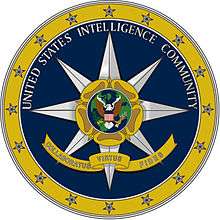Military Intelligence Corps (United States Army)
The Military Intelligence Corps is the intelligence branch of the United States Army. The primary mission of military intelligence in the United States Army is to provide timely, relevant, accurate, and synchronized intelligence and electronic warfare support to tactical, operational and strategic-level commanders. The Army's intelligence components produce intelligence both for Army use and for sharing across the national intelligence community.[1]
| Military Intelligence Corps | |
|---|---|
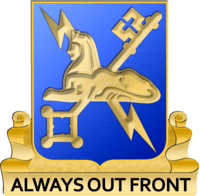 | |
| Country | United States |
| Branch | U.S. Army |
| Type | Military intelligence |
| Garrison/HQ | INSCOM – Fort Belvoir, VA |
| Motto(s) | Always Out Front |
| March | "Freedom on Parade" |
| Engagements | American Civil War World War I World War II Korean War Vietnam War Operation Desert Storm Operation Enduring Freedom Operation Iraqi Freedom |
| Commanders | |
| U.S. Army Deputy Chief of Staff (G2—Intelligence) | LTG Scott D. Berrier |
| Commander (INSCOM) | MG Gary W. Johnston |
| Insignia | |
| Branch insignia (1962-present) |  |
| Branch plaque | 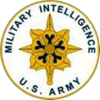 |
| Regimental coat of arms |  |
| Former branch insignia (1923-1962) | 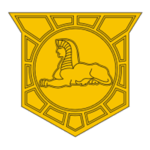 |
History
Intelligence personnel were a part of the Continental Army since its initial founding in 1775.
In 1776, General George Washington commissioned the first intelligence unit. Knowlton's Rangers, named after its leader Colonel Thomas Knowlton, became the first organized elite force, a predecessor to modern special operations forces units such as the Army Rangers, Delta Force, and others. The "1776" on the United States Army Intelligence Service seal refers to the formation of Knowlton's Rangers.
In January 1863, Major General Joseph Hooker established the Bureau of Military Information for the Union Army during the Civil War, headed by George H. Sharpe. Allan Pinkerton and Lafayette C. Baker handled similar operations for their respective regional commanders. All of those operations were shut down at the end of the Civil War in 1865.[2]
In 1885, the Army established the Military Intelligence Division. In 1903, it was placed under the new general staff in an elevated position.[3]
In March 1942, the Military Intelligence Division was reorganized as the Military Intelligence Service. Originally consisting of just 26 people, 16 of them officers, it was quickly expanded to include 342 officers and 1,000 enlisted personnel and civilians. It was tasked with collecting, analyzing, and disseminating intelligence. Initially it included:
- an Administrative Group
- an Intelligence Group
- a Counter-intelligence Group
- an Operations Group
- a Language School
In May 1942, Alfred McCormack established the Special Branch of the Military Intelligence Service, which specialized in communications intelligence.
On January 1, 1942, the U.S. Army Corps of Intelligence Police, founded in World War I, was re-designated as the US Army Counter Intelligence Corps. In 1945, the Special Branch became the Army Security Agency.
At its peak in early 1946, the MIS Language School had 160 instructors and 3,000 students studying in more than 125 classrooms, graduating more than 6,000 students by the end of the war. What began as an experimental military intelligence language-training program launched on a budget of $2,000 eventually became the forerunner of today's Defense Language Institute for the tens of thousands of linguists who serve American interests throughout the world.[4]
In 1946 the school moved to the Presidio of Monterey. Renamed the Army Language School, it expanded rapidly in 1947–48 during the Cold War. Instructors, including native speakers of more than thirty languages and dialects, were recruited from all over the world. Russian became the largest language program, followed by Chinese, Korean, and German.[5]
On September 1, 1954, the Assistant Chief of Staff for Intelligence (ACSI) officially redesignated the CIC Center, Fort Holabird, MD as the Army Intelligence Center, and the Chief of the Counter Intelligence Corps became its Commanding General. The following year, the Intelligence Center expanded further with the addition of the Photo Interpretation Center. Additionally, combat intelligence training (including order of battle techniques, photo interpretation, prisoner of war interrogation, and censorship) was transferred from the Army General School at Fort Riley, Kansas to Fort Holabird, giving the Commanding General the additional title of Commandant, US Army Intelligence School. This arrangement centralized nearly all intelligence training at the US Army Intelligence Center and School, Fort Holabird.
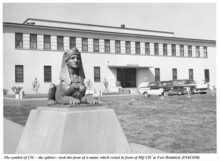
The Intelligence Center and School remained at Fort Holabird until overcrowding during the Vietnam War forced its relocation to Fort Huachuca, Arizona. Fort Huachuca became the "Home of Military Intelligence" on 23 March 1971, and the last class graduated from Fort Holabird on 2 September 1971, nearly 17 years to the day after the Army Intelligence Center was established there. USAINTCS Established at Ft. Holabird, MD
On 1 July 1962, the Army Intelligence and Security Branch was established as a basic Army branch to meet the increased need for national and tactical intelligence.[6] The redesignated branch came with the creation of a new dagger and sun branch insignia, replacing the sphinx insignia that had been in place since 1923.[7]
It was in July 1967, that a number of intelligence and security organizations were combined to form the military intelligence branch.[8][9][10] In 1977 they eventually recombined with the Army Intelligence Agency and Army Security Agency to become the US Army Intelligence and Security Command.
In 1971, the United States Army Intelligence Center was established at Fort Huachuca, Arizona as the home of the military intelligence branch. On 1 July 1987 the Military Intelligence Corps was activated as a regiment under the U.S. Army Regimental System.[11] All United States Army Military Intelligence personnel are members of the Military Intelligence Corps.
Structure
Approximately 28,000 military personnel and 3,800 civilian personnel are assigned to intelligence duties, comprising the Military Intelligence Corps. Some of the key components include:
| Name | Insignia | Function | Garrison |
|---|---|---|---|
| Office of the Deputy Chief of Staff, Intelligence (G-2) | 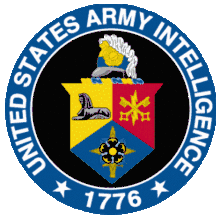 |
As the Army's Chief Intelligence Officer, the responsibilities of the Deputy Chief of Staff for Intelligence include policy formulation, planning, programming, budgeting, management, staff supervision, evaluation, and oversight for intelligence activities, as well as overall coordination of the major intelligence disciplines. | Ft Belvoir |
| U.S. Army Intelligence and Security Command (INSCOM) | 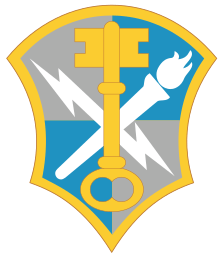 |
INSCOM is the U.S. Army's major intelligence command. | Ft Belvoir |
| U.S. Army Military Intelligence Readiness Command (MIRC) | 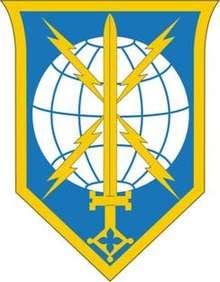 |
MIRC is the U.S. Army Reserve's intelligence command. | Ft Belvoir |
| U.S. Army Intelligence Center of Excellence (USAICoE) | 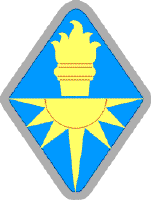 |
USAICoE is the U.S. Army's school for professional training of military intelligence personnel. | Fort Huachuca |
Major military intelligence units
| Name | Insignia | Supports | Garrison |
|---|---|---|---|
1st Information Operations Command (Land)
|
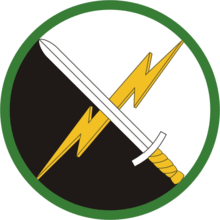 |
United States Army Cyber Command (ARCYBER) | Fort Belvoir |
58th Expeditionary Military Intelligence Brigade
|
 |
Maryland Army National Guard | Maryland |
66th Military Intelligence Brigade
|
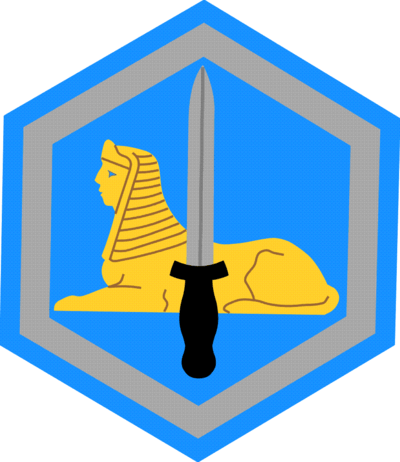 |
United States Army Europe | Lucius D. Clay Kaserne (Wiesbaden, Germany) |
71st Expeditionary Military Intelligence Brigade
|
 |
Texas Army National Guard | Texas |
111th Military Intelligence Brigade
|
 |
United States Army Intelligence Center of Excellence | Fort Huachuca |
116th Military Intelligence Brigade (Aerial Intelligence)
|
 |
INSCOM | Fort Gordon |
201st Expeditionary Military Intelligence Brigade
|
 |
I Corps | Joint Base Lewis-McChord |
207th Military Intelligence Brigade (Theater)
|
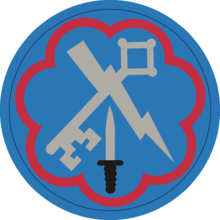 |
United States Army Africa | Vicenza, Italy |
259th Expeditionary Military Intelligence Brigade (Army Reserve)
|
 |
MIRC | Joint Base Lewis–McChord |
300th Military Intelligence Brigade (Linguist) (Army National Guard)
|
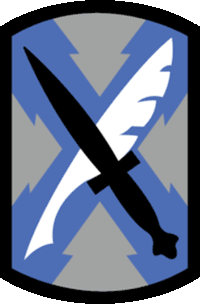 |
INSCOM | Draper, Utah |
336th Expeditionary Military Intelligence Brigade (Army Reserve)
|
 |
MIRC | New Jersey |
470th Military Intelligence Brigade
|
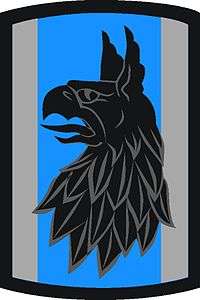 |
United States Army South | Fort Sam Houston |
500th Military Intelligence Brigade
|
 |
United States Army Pacific | Schofield Barracks |
501st Military Intelligence Brigade
|
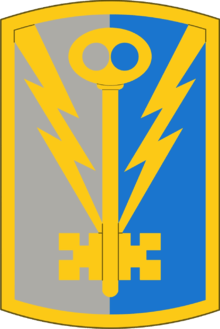 |
Eighth United States Army | Yongsan Garrison, (South Korea) |
504th Military Intelligence Brigade
|
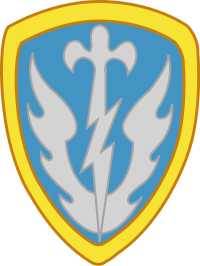 |
III Corps | Fort Hood |
505th Military Intelligence Brigade (Army Reserve)[12]
|
 |
United States Army North | San Antonio, Texas |
513th Military Intelligence Brigade
|
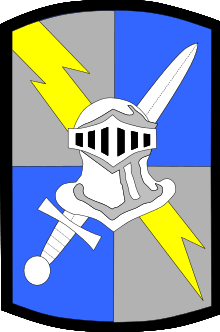 |
United States Army Central | Fort Gordon |
525th Expeditionary Military Intelligence Brigade
|
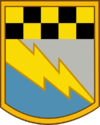 |
XVIII Corps | Fort Bragg |
648th Regional Support Group (Army Reserve)
|
 |
MIRC | St. Louis, Missouri |
| 650th Military Intelligence Group[13][14] |  |
Supreme Headquarters Allied Powers Europe | Mons, Belgium |
704th Military Intelligence Brigade
|
 |
National Security Agency | Fort George G. Meade |
706th Military Intelligence Group
|
 |
Central Security Service | Fort Gordon |
780th Military Intelligence Brigade
|
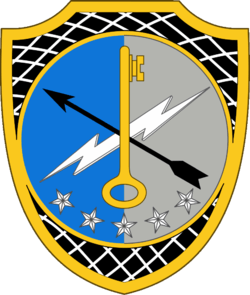 |
ARCYBER | Fort George G. Meade |
902nd Military Intelligence Group
|
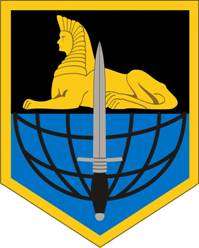 |
INSCOM | Fort George G. Meade |
Defense Language Institute Foreign Language Center
|
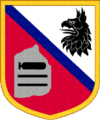 |
United States Army Training and Doctrine Command | Presidio of Monterey, California |
National Ground Intelligence Center
|
 |
INSCOM | Charlottesville, Virginia |
Creed and march of the Military Intelligence Corps
Creed of the Military Intelligence Corps
I am a Soldier first, but an intelligence professional second to none.
With pride in my heritage, but focused on the future,
Performing the first task of an Army:
To find, know, and never lose the enemy.
With a sense of urgency and of tenacity, professional and physical fitness,
and above all, INTEGRITY, for in truth lies victory.
Always at silent war, while ready for a shooting war,
The silent warrior of the ARMY team.[15]
Military Intelligence Corps March
Onward to victory!
Our silent warriors to the fight.
Onward to victory!
Trained and ready day or night.
Peace through intelligence!
Here's to your health and to our corps.
Strength through intelligence!
Toujours Avant forever more.
Museum
The United States Army Intelligence Museum is located at Fort Huachuca, Arizona. It features the history of American military intelligence from the Revolutionary War to present. In the Army Military Intelligence Museum there is a painting of "The MI Blue Rose". The back of this painting indicates Sgt. Ralph R Abel, Jr. created it. The painting was photographed and distributed worldwide. Sgt. Abel also painted a replica of the corps flag.
Military Intelligence Hall of Fame
See also
References
- United States Intelligence Community Official Website Archived 21 October 2007 at the Wayback Machine
- "Intelligence in the Civil War" (PDF). Central Intelligence Agency. Archived from the original (PDF) on 25 December 2013. Retrieved 2014-07-24.
- Theoharis, Athan G., ed. (1999). The FBI: A Comprehensive Reference Guide. Phoenix, OR: The Oryx Press. p. 160. Retrieved 20 May 2011.
- Hammons, Steve (22 April 2015). "The Japanese-American U.S. Army Intelligence Unit that helped win WWII". Defense Language and National Security Education Office. Retrieved 14 March 2020.
- "History of the Presidio of Monterey - Army Language School". Defense Language Institute, Foreign Language Center.
- "Army Birthdays". U.S. Army Center of Military History. Department of the Army. Retrieved 3 September 2015.
- "Military Intelligence, USAR (Obsolete)". The Institute of Heraldry. Office of the Administrative Assistant to the Secretary of the Army.
- "Publications 101" (PDF). usapa.army.mil. Archived from the original (PDF) on 15 October 2004.
- "index2". Hrc.army.mil. 28 October 2009. Retrieved 20 May 2011.
- John Patrick Finnegan, Center of Military History, United States Army, Washington, D. C. (1998). "Military Intelligence". Archived from the original on 22 January 2008. Retrieved 18 February 2008.CS1 maint: multiple names: authors list (link)
- Welcome To the Intelligence Center Online Network Archived 17 July 2007 at the Wayback Machine
- MIRC Family Programs Newsletter; Volume 1, Issue 4 Archived 18 April 2015 at the Wayback Machine dated October 2014, last accessed 18 April 2015
- AR 381–10, U.S. Army Intelligence Activities, Department of the Army, dated 3 May 2007, last accessed 7 July 2012
- FM 34-37; Strategic, Departmental, and Operational IEW Operations; Chapter 9, 650TH Military Intelligence Group, last accessed 7 July 2012
- "G-2 Intelligence". U.S. Army Europe. Archived from the original on 5 March 2018. Retrieved 25 November 2016.
Further reading
- McChristian, General Joseph A. (1994) [1974]. The Role of Military Intelligence, 1965–1967. Vietnam Studies (reprint ed.). United States Army Center of Military History. CMH Pub 90-19.
- Ruiz, Victor H. (2010). A Knowledge Taxonomy for Army Intelligence Training: An Assessment of the Military Intelligence Basic Officer Leaders Course Using Lundvall's Knowledge Taxonomy. Applied Research Projects. Texas State University Paper 331.
